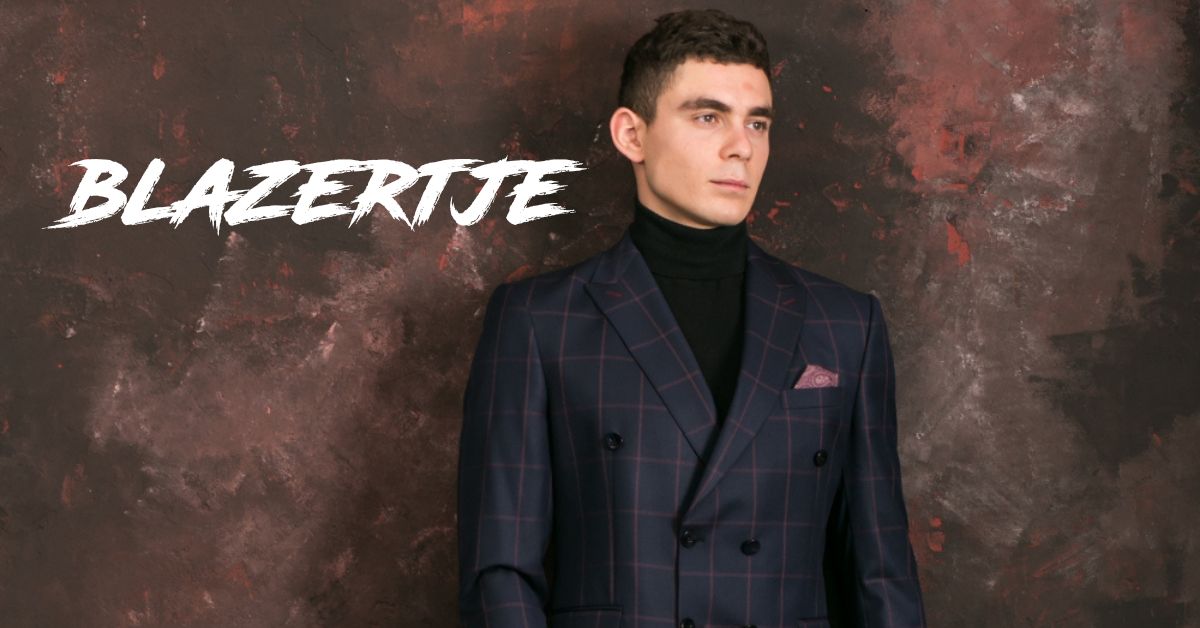Fashion
Blazertje: The Timeless Fashion Piece with a Modern Twist

Fashion is full of items that move in and out of popularity, yet a few select pieces continue to stand the test of time. One of these pieces is the blazer, and in the context of modern style, it often appears under the keyword blazertje. The term refers to the blazer as it has been embraced and reinterpreted in digital spaces, particularly on social media platforms where trends evolve rapidly but often circle back to timeless classics. Understanding the role of the blazertje requires looking at its origins, its cultural journey, and its contemporary relevance.
Origins of the Blazer
The blazer originated as a distinct type of lightweight sports jacket, commonly associated with naval traditions and elite schools in the nineteenth century. Traditionally crafted from wool or linen, often in navy or striped patterns, the blazer stood out due to its metal buttons and structured design. Over time, this garment became a symbol of authority, sophistication, and refinement. The transition from formal military or schoolwear into casual and professional wardrobes marked the beginning of the blazer’s evolution into the blazertje that is now recognized as a versatile piece of clothing across demographics.
The Cultural Significance of the Blazertje
The blazertje carries cultural weight because it bridges the gap between formal and casual dressing. It represents the balance between tradition and adaptation. During the twentieth century, the blazer became part of standard office attire, but with the rise of social media and shifting cultural expectations, its identity began to evolve. The blazertje entered popular vocabulary as individuals sought to express style, individuality, and confidence while maintaining a touch of timelessness. The way people discuss and share images of this garment online has redefined its reputation, not as stiff formalwear, but as a stylish item that can be adjusted for multiple settings.
Blazertje Across Generations
Different generations have reinterpreted the blazertje in unique ways. For older generations, the blazer was closely tied to formal functions and workplaces, while younger generations see it as a layering option that can be combined with casual items such as jeans or sneakers. This intergenerational adaptability highlights its timeless quality. Social media has amplified this versatility, with influencers and stylists presenting the blazer as a symbol of modern dressing. By mixing it with unexpected textures, patterns, or accessories, they have made it accessible to new audiences.
The Structure and Materials of a Blazertje
A defining element of the blazertje is its structure. The fitted shoulders, precise cuts, and button placement create a sharp silhouette that enhances posture and presence. The choice of fabric plays an equally important role. Traditional wool and linen remain classics, but cotton blends, tweed, and even modern sustainable fabrics have added variety. Seasonal fabrics such as lightweight linen for summer and thicker wool for winter extend its use throughout the year. As fashion continues to emphasize sustainability, it has also been reimagined in eco-friendly materials, contributing to its ongoing relevance.
Styling the Blazertje
Styling the blazertje depends heavily on context. In professional environments, it is often paired with dress trousers and a button-down shirt. For casual occasions, it can be styled with denim or a t-shirt, softening its formal tone without losing refinement. This flexibility is one of the reasons the garment has stayed in circulation for decades. On social media, where the word blazertje frequently trends, the styling options demonstrate how adaptable it can be for anyone regardless of personal aesthetic.
A Comparison of Blazertje Variations
| Variation | Key Features | Typical Context |
| Classic Navy | Wool or cotton, gold buttons | Professional and formal |
| Striped Blazertje | Vertical stripes, lightweight fabrics | School or nautical roots |
| Casual Linen | Soft structure, breathable linen | Summer and leisure wear |
| Oversized Blazertje | Relaxed fit, broader cut | Street style and layering |
| Cropped Version | Shorter length, modern tailoring | Trend-driven fashion |
| Sustainable Fabric | Recycled or organic textiles | Eco-conscious dressing |
This table shows the diversity of the blazertje across different fashion contexts. While rooted in tradition, it continuously adapts to reflect the values and preferences of contemporary culture.
The Blazertje in Workwear
Workwear has undergone dramatic changes over the last few decades. Once dominated by strict suits and ties, modern workplaces often encourage more relaxed dress codes. Yet, it is continues to hold a central role. It provides the right mix of professionalism and comfort, allowing individuals to appear polished without being overly formal. The garment has become symbolic of adaptable workwear, bridging remote and office environments with equal ease.
The Blazertje in Social Media Culture
The rise of Instagram, TikTok, and other platforms has elevated the blazer into a fashion staple for digital audiences. Hashtags and outfit-of-the-day posts frequently feature it, showcasing its capacity to blend with streetwear, luxury pieces, or thrifted finds. The visual nature of these platforms highlights how well the blazertje photographs, thanks to its sharp lines and ability to frame the wearer. The term has taken on new relevance as younger audiences search for outfit inspiration under its name.
Gender Neutrality and the Blazertje
The blazertje has also played an important role in conversations about gender-neutral fashion. While blazers were once designed within strict categories of menswear and womenswear, today’s versions blur those boundaries. Oversized cuts, minimalistic designs, and neutral color palettes have made the blazer an inclusive item that transcends traditional gender divisions. This shift reflects broader cultural changes in fashion toward inclusivity and individuality.
The Timelessness of the Blazertje
What makes the blazertje timeless is its ability to evolve without losing its essence. Unlike many short-lived trends, it has continuously adapted to suit new generations. Each reinterpretation builds on its heritage, ensuring it remains relevant. Its clean structure, ability to convey confidence, and adaptability across occasions contribute to this enduring quality.
Regional Interpretations
Different regions interpret them according to cultural norms. In Europe, it often carries an air of classic sophistication tied to tradition. In the United States, it is associated with preppy culture and casual professional wear. In Asia, the it has been integrated into streetwear, with oversized fits and playful colors reshaping its identity. These variations highlight the garment’s flexibility and universal appeal.
The Blazertje and Sustainability
As sustainable fashion gains prominence, the blazertje has also been reevaluated in terms of production and longevity. A well-crafted blazer can last for decades, aligning with the principles of slow fashion. Designers have started producing versions made from recycled textiles and organic fabrics, ensuring that it is continues to evolve while aligning with environmental concerns. Its durability makes it a wise addition to a wardrobe, reducing the need for frequent replacements.
Future of the Blazertje
Looking forward, the blazertje seems set to maintain its relevance. Technological innovations in fabrics may introduce wrinkle-resistant, breathable, or even smart textiles into its construction. The garment will likely continue to adapt to cultural changes, from hybrid work environments to the increasing importance of sustainability. Social media will keep reshaping its meaning, ensuring it remains both a timeless and modern piece.
Conclusion
The blazertje represents a unique fusion of tradition and modernity. Rooted in nineteenth-century fashion, it has moved through cultural shifts, adapting to meet the needs of different generations and social contexts. Whether styled for professional environments, casual outings, or digital culture, it maintains its ability to convey elegance and individuality. Its ongoing presence in fashion conversations, both offline and online, demonstrates its lasting power. More than just a piece of clothing, the blazertje is a cultural marker of adaptability, confidence, and timelessness.
For More Information Visit running-bears.com
